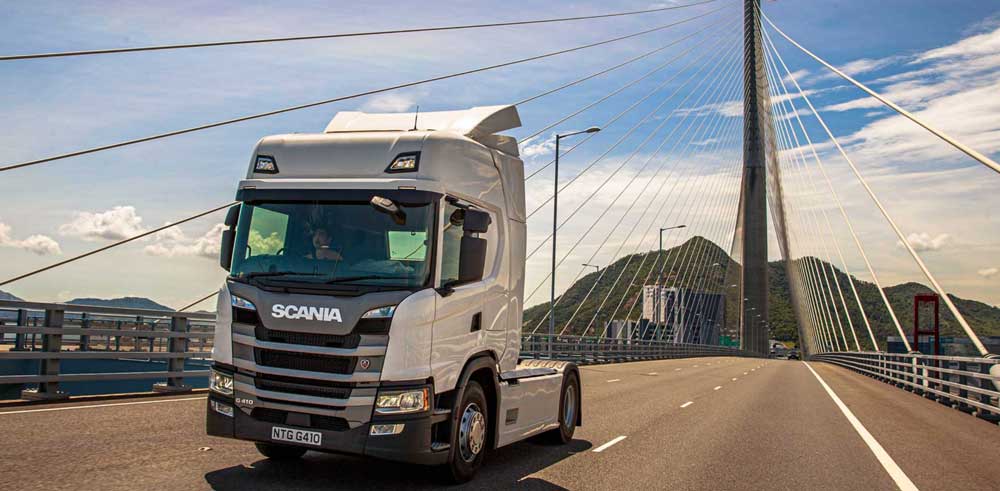Scania China is involved in a project for smart mobility in Hong Kong, using C-V2X technology that enables communication between a vehicle and any entity it may affect or be affected by, to conduct road tests.
Together with Hong Kong Applied Science and Technology Research Institute (ASTRI) and HKT (one of Hong Kong’s largest telecommunications provider), Scania has joined a trial to use 5G vehicle communications system on a 14 kilometre public road in the city, one of the longest testing routes in the world. It started early 2021 and is planned to last for nine months.
Improve road safety
Smart sensors will empower vehicles to communicate with other vehicles, pedestrians, cyclists, parking spaces, infrastructures and buildings to enable effective, faster and more accurate exchange of data. The aim is to significantly improve road safety and traffic efficiency and explore the possibilities vehicles have to communicate with their surroundings.
Scania is located in Hong Kong Science and Technology Park, and so is ASTRI. “We always find opportunity to work with other park’s tenant in pushing innovation forward for Hong Kong,” says Venessa Wong, Business Development Director at Scania China.

The collaboration with ASTRI enables Scania to explore more options on how to improve fuel efficiency and support product development, by further understanding driving behaviour in a safe environment. “This is a great opportunity to get us ready for transitioning into electrification and autonomous vehicles in Hong Kong. In phase one, we will be using our Volkswagen Transporter, followed by our urban range of Scania trucks and coaches.” Scania is the distributor for VW Commercial Vehicles in Hong Kong and Macau, which explains why they are used in the trial
Advanced technology
In the first phase of the project, an onboard-unit with C-V2X technology (Cellular – Vehicle to Everything) was installed on a Transporter from VW Commercial Vehicles. “All of our vehicles come with a communicator that monitors driving behaviour, vehicle performance and emission levels. Together with an onboard unit from ASTRI, the vehicle knows more about its own surroundings, and will be able to communicate this information to the driver or even perform safety actions itself if the driver does not react quickly enough. Additionally, traffic management systems will be better informed of live situations on the roads allowing improved management of infrastructure to keep traffic flowing smoothly and efficiently.“ A CAN (Controller Area Network) signal enables interaction with sensors set up along the route.
The expectation on this project is to speed up the shift in Hong Kong towards smarter, safer and more efficient transport. Meanwhile increasing the publics’ awareness regarding new technology and how it can improve the environment and their lives by supporting the creation of a smarter and sustainable city.










